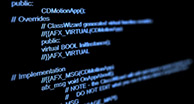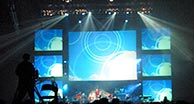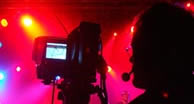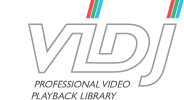1. General features
2. How it works
3. System Requirements & Supported formats
Download as PDF | Developer's Guide
2.1 How it works:
1.- Initialize the library in your application by specifying:
- A window handle (HWND) that will show the master video preview. This handle will typically be a CPanel inside the main application's window.
- The identifier of the screen that will be used for full-screen video playback (TV, projector, etc.)
2.- Initialize each "Deck".
A Deck is a container that will load, control and play a single video file. You can initialize up to 6 decks, named Deck A, Deck B, etc. Each deck works independently from others. Here you can (optionally) assign a window handle to each Deck. If assigned, the window will show the preview of the video file that is being played in that Deck.
3.- Load your files in the Decks. Once loaded you can:
- Retrieve the audio and video properties.
- Seek to any timecode position in the file.
- Read the audio from the video file. The audio is always served as plain, decoded PCM format.
- Play the audio using your audio engine. Then you must notify VIDJ about the audio that you have played, so VIDJ will automatically keep the audio in sync with the video. The faster (or slower) you play the audio, the faster (or slower) the video will be played.
At this point the Deck will show the video preview in its preview window (if assigned), but it won't be shown at the master preview or full screen windows.
4.- Show the Decks output Live!
You control whether each deck is shown in the master output and its video level: 0 = not shown, 1 = show in full, 0.5 partially shown (transparency). In Decks A and B the video level is used for crossfading both videos by applying one of the available video mixing effects.
That's all! The basis is really as simple as shown here.


Easy integration with any audio engine
Your audio application receives the plain PCM audio data from the video file. All you must do is playing the received audio throught your
audio engine and notifying VIDJ that the audio has been played. VIDJ will automatically keep the
video output in sync with the audio as you play it.

Powerful video playback and mixing features
Simultaneous playback of many files, single and mixed video previews, multiple screen support, video crossfading effects, live cameras, internet streams, custom graphic and text layers.
Also features built-in background, overlay logo and text ticker functionality.

99.9% reliability and compatibility
VIDJ rock-solid engine handles any unexpected situation gracefully by returning the appropiate error codes to your application. Video files are played exactly as regular audio files. No special care required on your side.
VIDJ communicates directly with the video codecs. Almost ANY video format is supported provided that the proper DirectShow video codec is installed.
